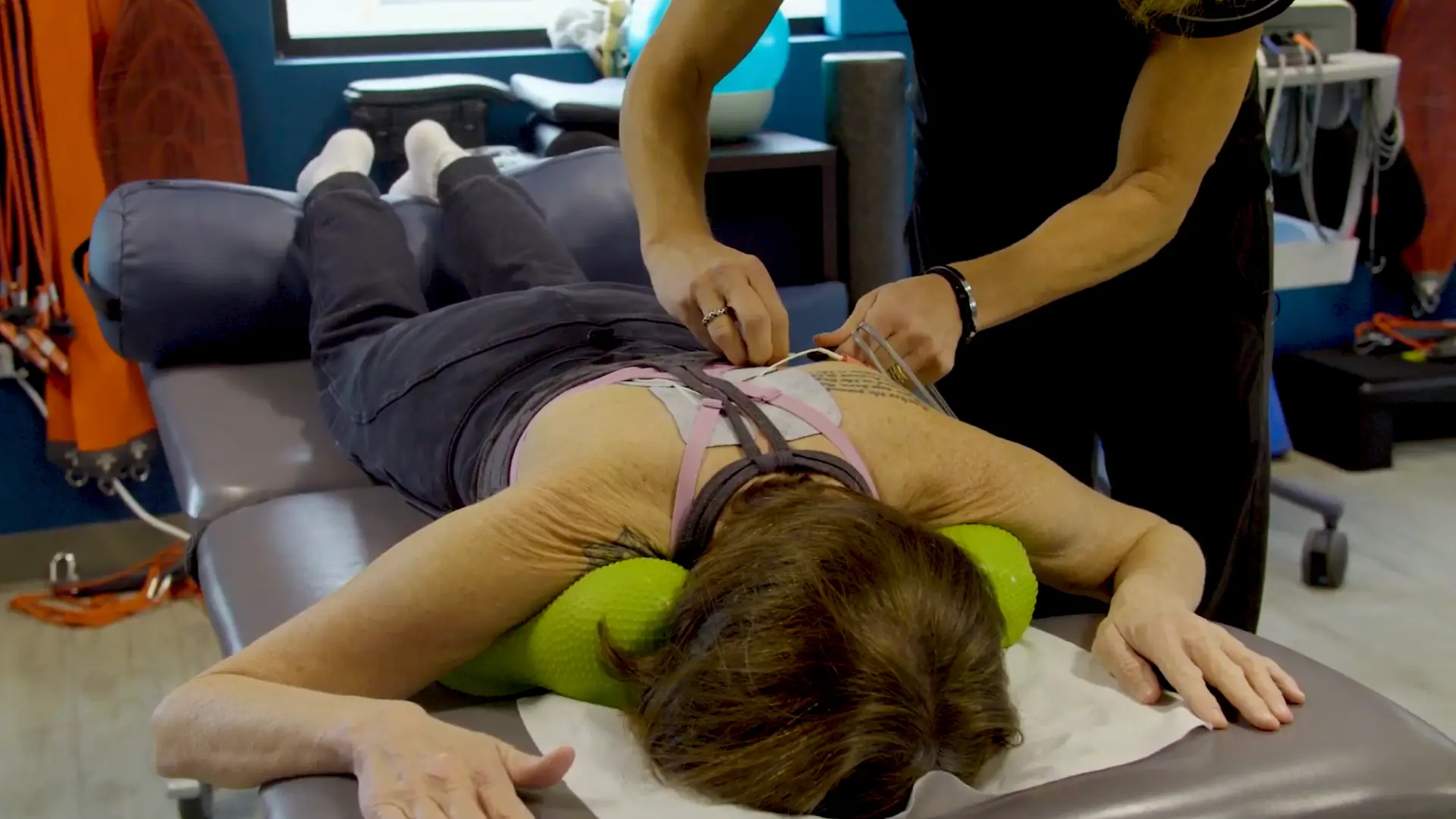Understanding Electrodiagnostic Testing: How It Identifies Nerve and Muscle Problems
If you’ve been experiencing numbness, tingling, weakness, or muscle pain, an electrodiagnostic test may help identify the cause. These tests—called EMG (electromyography) and nerve conduction studies—play a vital role in uncovering problems with how your nerves and muscles function.
Electrodiagnostic testing may help our specialists pinpoint the source of your symptoms and help guide treatment tailored to your needs. Whether recovering from an injury or navigating a chronic condition, this type of testing may be a critical next step in your healing journey.
What Is Electrodiagnostic Testing?
Electrodiagnostic testing refers to a group of procedures—most commonly electromyography (EMG) and nerve conduction studies (NCS)—used to evaluate how well your nerves and muscles are working. By measuring the electrical activity in muscles and the speed of nerve signals, these tests help identify whether your symptoms are caused by nerve compression, nerve injury, or muscle dysfunction.
Results from these studies may confirm a diagnosis and also guide treatment decisions. This makes them a powerful tool in managing conditions like radiculopathy, carpal tunnel syndrome, peripheral neuropathy, and more.
Why It’s Used in Musculoskeletal & Neurological Care
When patients present with symptoms like weakness, numbness, or radiating pain, it’s not always clear where the problem originates. Is the issue stemming from the spine, a peripheral nerve, or the muscle itself? This is where electrodiagnostic testing proves invaluable.
EMG and nerve conduction studies are used to:
- Help pinpoint the source of numbness, tingling, or weakness: Determine whether symptoms stem from nerve compression, severe irritation, or muscle dysfunction.
- Differentiate between nerve root problems (radiculopathy) and peripheral nerve issues: Identify whether the affected nerve is located near the spine or elsewhere in the affected limb.
- Confirm or rule out serious conditions: Detect disorders such as radiculopathy (nerve root in the spine), neuropathy, myopathy, or motor neuron disease when appropriate.
- Guide treatment planning—surgical vs. non-surgical: Help physicians decide whether Physical Therapy, medications, injections or regenerative medicine is appropriate or if referral for surgery is warranted.
Conditions Commonly Diagnosed with Electrodiagnostic Testing
Electrodiagnostic testing plays a vital role in diagnosing a range of nerve and muscle disorders, especially when symptoms overlap or aren’t clearly explained by imaging alone.
Patients are often referred for EMG and nerve conduction studies when symptoms suggest:
- Carpal Tunnel Syndrome
- Cervical or Lumbar Radiculopathy
- Peripheral Neuropathy
- Ulnar Nerve Entrapment
- Sciatica
- Muscle Disorders
- Nerve Injury due to trauma or overuse
How the Muscle and Nerve Conduction Tests Work, Step-by-Step
Electrodiagnostic testing typically involves two parts: a nerve conduction study and an EMG. Both tests are often performed during the same session, which usually lasts between 30 and 60 minutes.
The nerve conduction study uses small surface electrodes to deliver mild electrical impulses that measure how quickly signals travel through your nerves. This helps identify any slowing, blockage, or abnormal patterns.
The EMG involves placing a fine, sterile pin into selected muscles to record electrical activity during rest and movement. This reveals whether the muscle is responding properly to nerve signals. While you may feel very brief discomfort, the vast majority of people generally tolerate the testing.
When to Consider Electrodiagnostic Testing
If you’re dealing with nerve-related symptoms and still don’t have clear answers, it’s time to consider electrodiagnostic testing. More specifically, you may benefit from EMG and nerve conduction testing if you’re experiencing:
- Unexplained muscle weakness, numbness, or nerve pain
- New or lingering nerve-related symptoms after surgery
- Recurrent tingling, burning, or shooting pain in the arms or legs
- Need to diagnose nerve entrapments or confirm suspected disc-related issues
- Inconclusive findings on MRI, X-ray, or other imaging tests
Schedule Your Consultation with CHARM in Austin Today
At CHARM, we understand that every patient’s journey is unique. That’s why we pair advanced diagnostics like electrodiagnostic testing with individualized, non-surgical treatment plans designed to restore function and relieve pain—without unnecessary intervention. Conveniently located in Austin, our experienced team is here to help you find answers and feel confident about your next steps.
If you’re experiencing nerve pain, muscle weakness, or other unexplained symptoms, contact us today to schedule a consultation and take the first step toward lasting relief.

